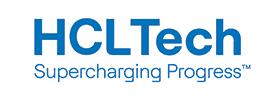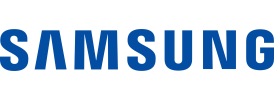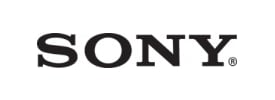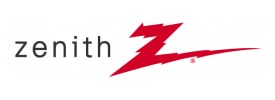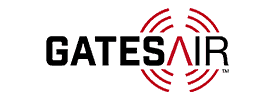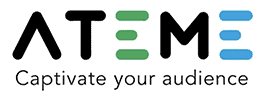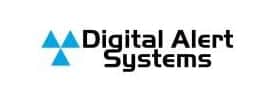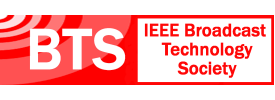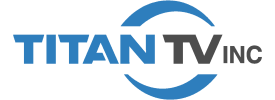- About
- Members
- Sponsors
- Subcommittees
- Technical Documents
- News
- Events
- Spotlight ATSC 3.0
- Contact Us
- Member Login
- Member Meetings
- Advanced Search
Search Site
Member Links
- About
- Members
- Sponsors
- Subcommittees
- Technical Documents
- News
- Events
- Spotlight ATSC 3.0
- Contact Us
- Member Login
- Member Meetings
- Advanced Search
25 Years—A Look Back at ATSC Over the Last Quarter Century
Posted on August 21, 2025 in ATSC News
Jerry Whitaker, VP Standards Development
At a dinner last month, Mark Richer joked (I think he was joking), “Jerry has been at ATSC for 25 years. He’s worked there for 15.” There is a kernel of truth in that, since my time at ATSC has been so enjoyable that it’s hard to call it “work.”
With my retirement coming up this summer, Madeleine was kind enough to offer me the opportunity to reflect on what’s been accomplished over the past quarter century. I acknowledge at the outset that relative to some long-time ATSC members and contributors, who have been involved since the mid-1990s, I’m a short-timer!
The first ATSC event that I attended was in November of 2000 in Arlington, VA. It was a day-long seminar on what PSIP was, and how to get it right. PSIP, of course, is the ATSC 1.0 Program and System Information Protocol as described in A/65. PSIP, and indeed Digital Television (DTV), was a radical new concept to TV station engineers who grew up on NTSC analog television. ATSC’s mission then, as now, included assisting in the transition to new technologies that provided exciting features and benefits to consumers.
Looking back over the past 25 years, an enormous amount of work has been accomplished, thanks to the members who contributed their time, ideas, and inspiration. The road has not always been smooth. We have certainly had more than a few battles over technical issues, but in the end, we have largely come away with as suite of technologies that everybody can support.
A great deal of credit goes to the Specialist Group and Technology Group chairs. Having served as Secretary for all Technology Groups since 2000, I’ve had the opportunity to work with some very smart and talented individuals. TG1 (previously known as TSG and before that T3) chairs were Ralph Justus, Bill Miller, John Henderson, Rich Chernock, and Michael Dolan. The TG3 chairs were Jim Kutzner, Rich Chernock, Madeleine Noland, Luke Fay, and now Paul Hearty.
In the early days, there were sometimes lengthy discussions and disagreements over which technology to develop and move forward to standardization. In virtually every case, however, the SG or TG chair found a way to move the ball forward. Maybe not by much, but enough to demonstrate that progress was being made. Mark Richer set the example in this regard. More than a few times, I sat in a meeting that seemed to be deadlocked. Mark, however, had a way of identifying options that few others recognized. It was part experience, part inspiration, and part gravitas. When Mark spoke, people listened. Those leadership qualities have continued with Madeleine.
One trait that has characterized ATSC and its members is a willingness to educate newcomers. This is probably universal in Standards Development Organizations (SDOs); it certainly exists in ATSC. Having spent more than four decades in broadcast and related industries, I was nonetheless a newbie when it came to standards work when I joined the staff in 2000. Virtually every member that I asked for help was more than willing to explain the technical details or other aspects of work then underway or planned for the future. I’m sure many other ATSC members have had similar experiences. This mindset allows an organization to bring new people into the process and ultimately move projects forward. I think it is one of the reasons why ATSC has not just survived since its founding in 1983, but has thrived.
Every SDO has a process—a workflow—that it follows to develop and standardize a given technology. For ATSC, the workflow hasn’t changed much over the past 25 years, but the tools have changed dramatically. In 2000 ATSC had exactly one email reflector. It was set up by Rich Chernock (in a clandestine manner, I believe) on an IBM server somewhere. A few years later, Mark and I installed a Dell server in the Washington D.C. office and launched atscmembers.org. It was the first online document repository for the organization. Individual reflectors could be added using the mailing list manager Majordomo, each of which took the better part of a morning to configure.
Prior to these online resources, all ATSC meetings were in person, and all involved boxes of paper documents that were spread out on the meeting room tables, usually in NAB Conference Room A at 1771 N St., NW. There was a rule back in the day that any documents to be considered at a meeting needed to be submitted to staff a week in advance. That was primarily so we could manage the print run. And whoever drew the short straw was responsible for lugging the boxes of paper to the meeting.
In 2007 we launched the Kavi Workspace for ATSC. It was an enormous step forward, but with a somewhat steep learning curve for staff and members. Over time, Kavi was adopted by other SDOs and eventually came into widespread use. We left the Kavi platform three years ago. More correctly, Kavi left us. Regardless, the transition to Causeway went smoothly, with a minimum of issues. Continuing improvements over time have helped make workflows more efficient.
I’ve had the pleasure of working with some great staff members. Full-time employees, in addition to Mark and Madeleine, have included Robert Graves, Christy Kehlbeck, Tara Healy, Lisa Hester, Lindsay Shelton-Gross, Daro Bruno, Amy Lodes, and Anh Ngo. All have brought unique talents to ATSC, and those who have moved on to other endeavors are fondly remembered.
A wide range of technologies have been developed and standardized by ATSC. The landmark DTV (ATSC 1.0) suite of standards brought high-definition television to consumers. Innovative ways of using the new digital platform led to the development of the A/90 suite of Data Broadcast Standards, the A/100 DTV Application Software Environment (DASE), and the A/153 Mobile/Handheld suite of standards. This evolution of the DTV system continued with other standards that came to be grouped as “ATSC 2.0.”
The market success of any standard, of course, is a function of many things. Technology is paramount, but timing is also critical. A standard developed before the market is ready for it runs the risk of missing the mark. By the same token, a standard developed too late may be overtaken by events as suppliers and consumers adopt proprietary solutions. Still other standards may not gain traction due to events and market forces unforeseen at the beginning of the process. Whatever the market success of any given standard, the work done to develop that technology often lives on in subsequent projects and endeavors.
There is little doubt that the stars have aligned with regard to ATSC 3.0. The original course was charted with detailed studies carried out in several Planning Teams. Countless meetings over a span of many years have led to the ATSC 3.0 system that we have today—the most advanced broadcast system ever developed. And improvements and extensions continue today, notably the B2X (Broadcast to Everything) and BCN (Broadcast Core Network) work now underway in TG3.
With the benefit of some years of perspective, the achievements of ATSC over the past 25 years have been impressive. Since progress in any SDO is driven by contributions from its members, credit for the first-in-class ATSC 3.0 system belongs to the membership. Given the momentum that we have today, the future is very bright. I can’t wait to see where ATSC goes from here.

At the 2001 NAB Convention, ATSC had a large exhibit in the Grand Lobby of the Las Vegas Convention Center. The “DTV Store” showcased consumer products for the new digital television system that we now call ATSC 1.0. The exhibit was jointly sponsored by ATSC, NAB, and CTA.

In 2015 ATSC received a Primetime Emmy® Engineering Award from the National Academy of Television Arts & Sciences for the development of A/85, “Techniques for Establishing and Maintaining Audio Loudness for Digital Television.” Holding the Emmy are Pat Waddell and Jim Starzynski.
Posted in ATSC News
News Categories
News Archives
Subscribe
Subscribe to The Standard, our monthly newsletter. Learn More
Join ATSC
ATSC is a membership organization with both voting and observer categories. Voting members include corporations, nonprofit organizations, and government entities, and they participate actively in the work of ATSC. Observers are individuals or entities not eligible to be a voting member.
Subscribe to our Newsletter
Subscribe to The Standard, our monthly newsletter, to stay up-to-date with ATSC news and events around the world.
Site Links
Contact Us
ATSC
1300 I Street NW, Suite 400E
Washington, DC 20005 USA
Do you have questions about ATSC?
About ATSC
ATSC, the Broadcast Standards Association, is an international, non-profit organization developing voluntary standards and recommended practices for digital terrestrial broadcasting. Serving as an essential force in the broadcasting industry, ATSC guides the seamless integration of broadcast and telecom standards to drive the industry forward. Currently, the ATSC 3.0 Standard is providing the best possible solution for expanding the potential of the broadcast spectrum beyond its traditional application to meet changing needs. From conventional television to innovative digital data services, ATSC has one clear goal: to empower the broadcasting ecosystem like never before.
© 2026 ATSC




